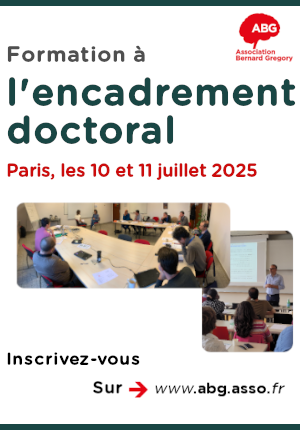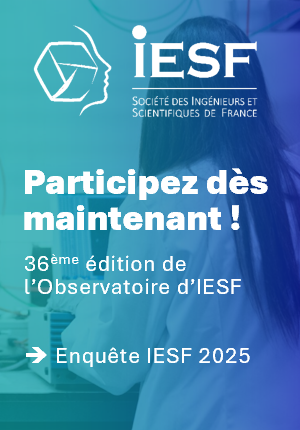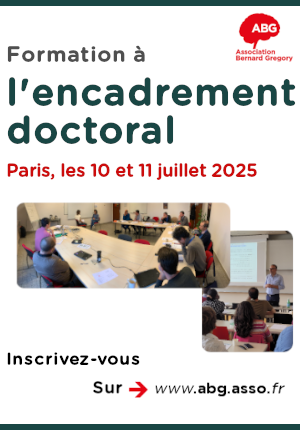Caractérisation de la porosité sur des pièces imprimées 3D fibres longues sollicitées en fatigue // Characterization of porosity for 3D printed long fiber composites sollicited in fatigue
|
ABG-131306
ADUM-65299 |
Thesis topic | |
| 2025-04-19 | Public funding alone (i.e. government, region, European, international organization research grant) |
Université de Savoie Mont-Blanc
ANNECY-LE-VIEUX - France
Caractérisation de la porosité sur des pièces imprimées 3D fibres longues sollicitées en fatigue // Characterization of porosity for 3D printed long fiber composites sollicited in fatigue
- Electronics
comportement mécanique, porosité, impression 3D composites, tomographie
mechanical behaviour, porosity, 3D printing composites, tomography
mechanical behaviour, porosity, 3D printing composites, tomography
Topic description
La fabrication additive de pièces fonctionnelles connait un développement applicatif important malgré la difficulté de maîtriser le comportement mécanique des pièces produites. Les travaux effectués au laboratoire SYMME pendant la thèse de Daouda Nikiema (2021-24) ont apporté de nombreuses réponses à ces problématiques aussi bien pour des structures monomatières que composites à fibres longues. Cependant, l'analyse s'est limitée à des sollicitations en traction et principalement dans le domaine élastique. Il a été mis en évidence que la porosité joue un rôle primordial sur les caractéristiques mécaniques d'une pièce imprimée.
L'objectif principal de cette thèse est donc de proposer une méthodologie pour observer, quantifier puis modéliser l'évolution de la porosité des pièces imprimées et ainsi lever le verrou scientifique sur la prédiction du comportement mécanique des pièces composites imprimées 3D. Sans cette connaissance approfondie de la porosité initiale (inhérente à la fabrication additive) et de son évolution lors de sollicitations (proportion de vide, délamination entre couches, cohésion des fibres, propagation de fissures...), il sera impossible d'aller plus loin dans la prédiction de leur tenue mécanique.
L'objectif scientifique de cette thèse est d'apporter un modèle de comportement élastoplastique, en fonction des paramètres d'impression, pour des pièces qui seront sollicitées de manière quasi-statique et également sollicitées en fatigue.
------------------------------------------------------------------------------------------------------------------------------------------------------------------------
------------------------------------------------------------------------------------------------------------------------------------------------------------------------
Additive manufacturing of functional parts is seeing significant application development, even if it is difficult to control the mechanical behaviour of the produced parts. Research carried out in the laboratory during Daouda Nikiema's PhD thesis (2021-24) has provided many answers to these issues, both for single-material structures and for composites using continuous fibres. However, the analysis was limited to tensile stress, and mainly in the elastic part. It was shown that porosity plays a key role in the mechanical characteristics of the printed part.
The main aim of this thesis is therefore to propose a methodology for observing, quantifying and modelling the evolution of porosity in printed parts, and thus lift the scientific barrier to predict the mechanical behaviour of 3D composite pieces. Without in-depth knowledge of initial porosity (inherent to additive manufacturing) and its evolution under stress (proportion of voids, delamination between layers, cohesion of fibres, crack propagation, etc.), it will be impossible to go any further in predicting mechanical strength.
The aim is to provide a model of elastoplastic behaviour, as a function of printing parameters, for parts that will be subjected to quasi-static and fatigue loading.
------------------------------------------------------------------------------------------------------------------------------------------------------------------------
------------------------------------------------------------------------------------------------------------------------------------------------------------------------
Début de la thèse : 01/10/2025
L'objectif principal de cette thèse est donc de proposer une méthodologie pour observer, quantifier puis modéliser l'évolution de la porosité des pièces imprimées et ainsi lever le verrou scientifique sur la prédiction du comportement mécanique des pièces composites imprimées 3D. Sans cette connaissance approfondie de la porosité initiale (inhérente à la fabrication additive) et de son évolution lors de sollicitations (proportion de vide, délamination entre couches, cohésion des fibres, propagation de fissures...), il sera impossible d'aller plus loin dans la prédiction de leur tenue mécanique.
L'objectif scientifique de cette thèse est d'apporter un modèle de comportement élastoplastique, en fonction des paramètres d'impression, pour des pièces qui seront sollicitées de manière quasi-statique et également sollicitées en fatigue.
------------------------------------------------------------------------------------------------------------------------------------------------------------------------
------------------------------------------------------------------------------------------------------------------------------------------------------------------------
Additive manufacturing of functional parts is seeing significant application development, even if it is difficult to control the mechanical behaviour of the produced parts. Research carried out in the laboratory during Daouda Nikiema's PhD thesis (2021-24) has provided many answers to these issues, both for single-material structures and for composites using continuous fibres. However, the analysis was limited to tensile stress, and mainly in the elastic part. It was shown that porosity plays a key role in the mechanical characteristics of the printed part.
The main aim of this thesis is therefore to propose a methodology for observing, quantifying and modelling the evolution of porosity in printed parts, and thus lift the scientific barrier to predict the mechanical behaviour of 3D composite pieces. Without in-depth knowledge of initial porosity (inherent to additive manufacturing) and its evolution under stress (proportion of voids, delamination between layers, cohesion of fibres, crack propagation, etc.), it will be impossible to go any further in predicting mechanical strength.
The aim is to provide a model of elastoplastic behaviour, as a function of printing parameters, for parts that will be subjected to quasi-static and fatigue loading.
------------------------------------------------------------------------------------------------------------------------------------------------------------------------
------------------------------------------------------------------------------------------------------------------------------------------------------------------------
Début de la thèse : 01/10/2025
Funding category
Public funding alone (i.e. government, region, European, international organization research grant)
Funding further details
Concours pour un contrat doctoral
Presentation of host institution and host laboratory
Université de Savoie Mont-Blanc
Institution awarding doctoral degree
Université de Savoie Mont-Blanc
Graduate school
634 Sciences Ingénierie Environnement
Candidate's profile
Formation niveau Bac + 5 en mécanique et matériaux avec une bonne connaissance en conception mécanique et en science des matériaux. Le candidat recherché devra idéalement avoir une expérience en impression 3D.
On recherche un profil équilibré entre expérimentateur et modélisateur ayant une appétence pour la recherche et la démarche scientifique. Une forte curiosité et une rigueur scientifique seront attendues pour mener à bien le projet.
Master's degree (Bac +5) in Mechanical Engineering and Materials Science, with a strong background in mechanical design and materials science. The ideal candidate should have experience in 3D printing. We are looking for a profile that strikes a balance between experimental work and modeling, with a strong interest in research and the scientific approach. A high level of curiosity and scientific rigor will be expected to successfully carry out the project.
Master's degree (Bac +5) in Mechanical Engineering and Materials Science, with a strong background in mechanical design and materials science. The ideal candidate should have experience in 3D printing. We are looking for a profile that strikes a balance between experimental work and modeling, with a strong interest in research and the scientific approach. A high level of curiosity and scientific rigor will be expected to successfully carry out the project.
2025-05-31
Apply
Close
Vous avez déjà un compte ?
Nouvel utilisateur ?
More information about ABG?
Get ABG’s monthly newsletters including news, job offers, grants & fellowships and a selection of relevant events…
Discover our members
 Généthon
Généthon  MabDesign
MabDesign  ANRT
ANRT  Laboratoire National de Métrologie et d'Essais - LNE
Laboratoire National de Métrologie et d'Essais - LNE  Aérocentre, Pôle d'excellence régional
Aérocentre, Pôle d'excellence régional  Institut Sup'biotech de Paris
Institut Sup'biotech de Paris  Nokia Bell Labs France
Nokia Bell Labs France 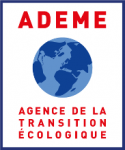 ADEME
ADEME  Groupe AFNOR - Association française de normalisation
Groupe AFNOR - Association française de normalisation  CASDEN
CASDEN  CESI
CESI  ONERA - The French Aerospace Lab
ONERA - The French Aerospace Lab 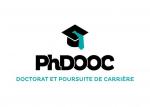 PhDOOC
PhDOOC  Tecknowmetrix
Tecknowmetrix  ASNR - Autorité de sûreté nucléaire et de radioprotection - Siège
ASNR - Autorité de sûreté nucléaire et de radioprotection - Siège  MabDesign
MabDesign  SUEZ
SUEZ  TotalEnergies
TotalEnergies  Ifremer
Ifremer

